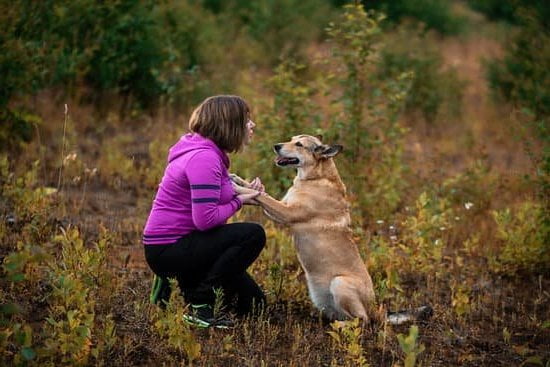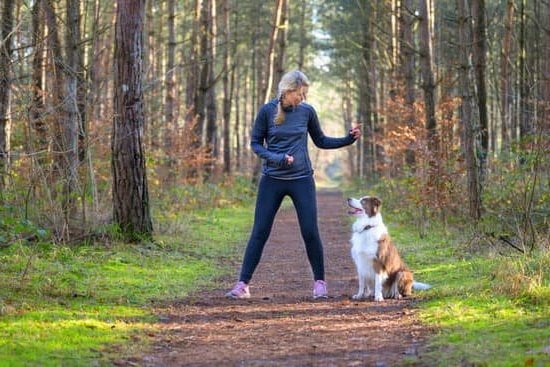Are you wondering how to train your dog to pull a cart? Carting, also known as drafting or draught work, is a great way to provide exercise and mental stimulation for your four-legged friend. In this article, we will guide you through the process of training your dog to pull a cart, from understanding the purpose of carting for dogs to choosing the right equipment and advanced training techniques.
Carting is not only a fun activity for dogs, but it also has practical applications. Historically, dogs have been used to help humans with various tasks such as pulling carts and sleds. Today, carting can be a great outlet for your dog’s energy and can even be used in activities such as competitive carting events or simply as a means to assist with tasks around the house or farm.
Before diving into the training process, it’s essential to choose the right equipment for your dog, including a harness, cart, and accessories. Additionally, getting your dog physically and mentally prepared for carting is crucial for their safety and enjoyment.
Throughout this article, we will provide step-by-step guidance on how to train your dog to pull a cart and troubleshoot common issues that may arise during the training process. So let’s get started on this rewarding journey of carting with your canine companion.
Choosing the Right Carting Equipment for Your Dog
When it comes to training your dog to pull a cart, choosing the right equipment is crucial for not only their safety but also their comfort and success. Here are some key factors to consider when selecting carting equipment for your furry friend:
- Harness: A well-fitting harness is essential for distributing the weight of the cart evenly across your dog’s body. Look for a padded harness that provides support without restricting their movement. Make sure to measure your dog properly to ensure the harness fits correctly.
- Cart: The type of cart you choose will depend on your dog’s size, strength, and the intended use of the cart. There are different styles available, including two-wheeled carts and four-wheeled wagons. Consider the terrain where you’ll be carting and choose a cart with suitable wheels for optimal maneuverability.
- Accessories: In addition to the harness and cart, there are several accessories that can enhance your dog’s carting experience. Some examples include shafts for connecting the harness to the cart, padding for added comfort, and reflective gear for visibility during low-light conditions.
By carefully selecting high-quality equipment that fits your dog properly, you can set them up for success before even beginning their carting training. With the right gear in place, you’ll be ready to move on to the next steps in preparing and training your dog for this unique activity.
Now let’s focus on getting your dog physically and mentally prepared for this exciting new endeavor.
Getting Your Dog Ready for Carting
Before you start training your dog to pull a cart, it’s important to ensure that your furry friend is physically and mentally prepared for this activity. Keep in mind that carting can be quite demanding on a dog’s body, so it’s crucial to take the time to prepare them properly.
To help you get started, here are some essential steps for getting your dog ready for carting:
- Physical Fitness: Before you begin training your dog to pull a cart, make sure they are in good physical shape. Take them for regular walks and engage in other forms of exercise to build their strength and endurance.
- Mental Preparation: Carting requires focus and discipline from your dog, so it’s beneficial to work on their mental readiness as well. Engage in obedience training and practice basic commands such as “sit,” “stay,” and “heel” to ensure they are responsive during carting.
- Acclimation: Introduce your dog to the equipment gradually. Start by familiarizing them with the harness and eventually progress to attaching them to an empty cart. This will help your dog get comfortable with the gear before adding any weight.
By taking these preparatory steps, you can help ensure that your dog is physically fit, mentally prepared, and comfortable with the carting equipment before beginning their formal training. These efforts will make the entire process more enjoyable for both you and your canine companion.
Now that you have laid the groundwork for preparing your dog for carting, it’s time to delve into the specifics of how to train them effectively. With proper preparation, you can set yourself up for success as you embark on this exciting activity with your four-legged friend.
Training Your Dog to Pull the Cart
When it comes to training your dog to pull a cart, it’s important to start with the basics. Before you even think about introducing the cart and weight, your dog needs to have a solid foundation in obedience training.
This means that they should be able to reliably respond to commands such as “sit,” “stay,” “come,” and “heel.” If your dog hasn’t mastered these basic commands yet, it’s essential to work on this before moving on to carting.
Once your dog has a good grasp of basic obedience commands, you can start introducing the concept of pulling the cart. The first step is to familiarize your dog with the harness and equipment. Allow them time to get used to wearing the harness and being connected to the cart without any weight attached. This helps them understand that it’s okay to feel a slight resistance and pressure while wearing the harness.
After your dog is comfortable with the equipment, you can begin teaching them specific commands related to pulling the cart. Start with simple cues like “hike” or “ready” when getting them ready, and “let’s go” when you want them to start moving forward. It’s crucial to use positive reinforcement techniques such as treats and praise when they respond correctly. Consistency and patience are key when training your dog how to pull a cart.
| Basic Commands | Description |
|---|---|
| Sit | Teach your dog how to sit on command. |
| Stay | Train your dog to stay in place until released. |
| Come | Teach your dog how to come when called. |
Introducing Weight and Resistance to Your Dog’s Carting Training
Once your dog has mastered the basics of pulling a cart, it’s time to introduce weight and resistance to their training. This will help them build strength and endurance, preparing them for more challenging carting tasks in the future. However, it’s crucial to take a gradual approach to avoid overwhelming your furry friend.
Gradually Increasing Weight
Start by adding a small amount of weight to the cart, such as lightweight objects or empty containers. Let your dog pull the slightly heavier load around and get used to the feeling of resistance. Gradually increase the weight as they become more comfortable with pulling the cart.
Building Endurance Through Resistance
Incorporate resistance training into your dog’s carting routine by having them pull the cart uphill or on uneven terrain. This will not only challenge their muscles but also improve their stamina and endurance. Be sure to monitor your dog’s energy levels and make adjustments as needed to prevent overexertion.
Paying Attention to Body Language
As you add weight and resistance to your dog’s carting training, pay close attention to their body language. Look for signs of fatigue or discomfort, such as lagging behind, excessive panting, or reluctance to continue pulling. It’s important to listen to your dog and adjust their training accordingly to ensure their safety and well-being.
By gradually introducing weight and resistance to your dog’s carting training, you can help them develop the strength and endurance necessary for this activity. Remember that patience and consistency are key when building up your dog’s skills in pulling a cart. With proper training, encouragement, and positive reinforcement, your furry companion will be ready for various carting tasks in no time.
Safety Tips for Carting With Your Dog
When it comes to carting with your dog, safety should always be a top priority. Whether you’re just starting out or you and your pup are seasoned carting pros, it’s essential to keep these do’s and don’ts in mind to ensure a safe and enjoyable experience for both you and your furry friend.
First and foremost, do invest in the right equipment. This includes a well-fitting harness that is specifically designed for carting, a sturdy and properly-sized cart, and any necessary accessories such as padding or reflective gear. Using the correct equipment not only ensures your dog’s comfort but also reduces the risk of injury during carting activities.
Next, do pay attention to the weather conditions. Carting with your dog should be avoided during extreme temperatures or inclement weather. Dogs can easily overheat or get cold when pulling a cart, so it’s important to choose the right time and place for your carting adventures.
Additionally, do start slow and gradually increase both the distance and weight when training your dog for carting. Building up your dog’s endurance and strength over time will help prevent fatigue or injury. On the other hand, don’t overload the cart with too much weight too soon – this can put unnecessary strain on your dog’s body and lead to exhaustion or muscle soreness.
| Do’s | Don’ts |
|---|---|
| Invest in proper equipment | Overload the cart with too much weight |
| Pick appropriate weather conditions | Cart during extreme temperatures or bad weather |
| Start slow and gradually increase distance/weight | Rush through training or overload too soon |
By following these do’s and don’ts, you can ensure that both you and your dog have a safe, enjoyable, and fulfilling experience while engaging in carting activities. Remember that patience, consistency, proper training techniques are essential for successfully integrating carting into your dog’s routine.
Advanced Training Techniques for Carting
Building Endurance for Carting
Once your dog has mastered the basic commands and is comfortable pulling a cart, you can start focusing on building endurance and strength. Start by gradually increasing the distance and duration of the carting sessions. This will help your dog build up their stamina and endurance, preparing them for longer carting trips.
Adding Weight Gradually
As your dog becomes more proficient at pulling the cart, you can begin to add weight to the cart. Start with a small amount of weight and gradually increase it as your dog gets stronger. It’s important not to overload the cart initially, as this could lead to strain or injury for your dog. Keep a close eye on their body language and behavior during training sessions to ensure they are not being overwhelmed by the added weight.
Strength Conditioning Exercises
In addition to pulling the cart, incorporating strength conditioning exercises into your dog’s routine can also help build the necessary muscles for carting. Activities such as hiking, uphill running, and agility training can all contribute to developing the strength needed for successful carting. Be sure to consult with a professional trainer or veterinarian to ensure that these exercises are appropriate for your dog’s fitness level and breed.
These advanced training techniques are crucial for preparing your dog for long-distance or heavy-duty carting. By gradually increasing endurance, adding weight cautiously, and integrating strength conditioning exercises, you can help your canine companion become a confident and capable carting partner.
Troubleshooting Common Issues in Carting Training
In conclusion, training your dog to pull a cart can be a rewarding activity for both you and your furry companion. By understanding the purpose of carting for dogs and choosing the right equipment, you can set the foundation for a successful carting experience. Once your dog is physically and mentally prepared, it’s time to start training them with basic commands and gradually introducing weight and resistance.
It’s important to remember that patience and consistency are key when it comes to carting training. Whether your dog is pulling too hard or not listening to commands, there are troubleshooting techniques that can help address these common issues. By utilizing advanced training techniques to build endurance and strength, you can further enhance your dog’s carting abilities.
Ultimately, carting with your dog should be a fun and fulfilling activity that brings you closer together. With the right approach and plenty of practice, you’ll be able to enjoy the many benefits of participating in this unique sport with your canine companion.
Remember, every dog is different, so be sure to tailor your training methods to suit your individual dog’s needs as you embark on this exciting journey of learning how to train a dog to pull a cart.

Welcome to the blog! I am a professional dog trainer and have been working with dogs for many years. In this blog, I will be discussing various topics related to dog training, including tips, tricks, and advice. I hope you find this information helpful and informative. Thanks for reading!





